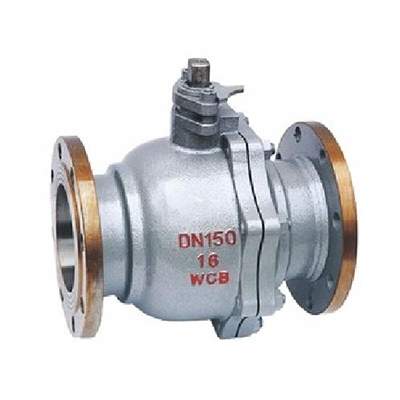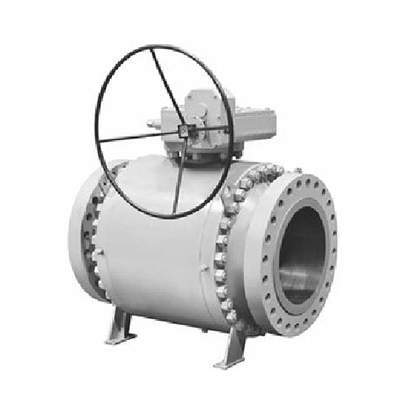Welcome to My Blog!
Before we dive into the content, I’d love for you to join me on my social media platforms where I share more insights, engage with the community, and post updates. Here’s how you can connect with me:
Facebook:https://www.facebook.com/profile.php?id=61563865935136
Now, let’s get started on our journey together. I hope you find the content here insightful, engaging, and valuable.
Introduction

In modern industrial systems, the choice of flow control components directly impacts system efficiency, safety, and longevity. Among these components, the stainless steel ball valve has gained recognition for its robust construction, excellent corrosion resistance, and reliable shutoff capabilities. Engineered to meet the rigorous demands of industries such as oil and gas, water treatment, pharmaceuticals, and food processing, this valve type has become a trusted choice for engineers and maintenance professionals alike.
This blog delves deep into the many uses and benefits of stainless steel ball valves, providing essential insights into how and where these valves perform best. We will also walk through various types, structural components, and considerations for choosing the right valve for your system. Whether you’re an industrial buyer or a mechanical engineer, this comprehensive guide offers all the knowledge you need to make informed decisions.
What Is a Stainless Steel Ball Valve?
A stainless steel ball valve is a mechanically operated valve that utilizes a rotating ball with a central bore to control the flow of liquid or gas through a pipe. This valve functions by turning the handle 90 degrees to align or misalign the bore with the flow path. In the open position, media flows freely; when closed, the solid part of the ball blocks flow entirely.
What sets this valve apart is its construction from stainless steel—most commonly grades like 304 and 316—which offers superior resistance to corrosion, high pressure, and temperature extremes. This makes it ideal for harsh environments, corrosive chemicals, and high-demand process lines. Unlike some other valves, stainless steel ball valves are designed for durability, often lasting for decades with proper maintenance.
The Anatomy of the Valve
Understanding the internal structure of the stainless steel ball valve helps users select the correct type for their system. Common components include:
- Body: The main structure encasing the internal parts. Made from corrosion-resistant stainless steel, it determines pressure class and temperature range.
- Ball: A spherical component with a central hole. When aligned with the pipe, it allows flow. When rotated, it stops it.
- Seats: Usually made of PTFE or similar materials, these create a seal around the ball, preventing leakage.
- Stem: Connects the ball to the external handle or actuator, facilitating movement.
- Handle or Actuator: Provides the means to rotate the valve between open and closed positions. In automated systems, this is replaced with pneumatic or electric actuators.
This precise construction contributes to the valve’s leak-tight integrity and ease of operation even under extreme conditions.
Types of Stainless Steel Ball Valves

Different system needs call for different valve types. Understanding the variations of stainless steel ball valves helps ensure you select the right one for your process.
Floating Ball Valve
A floating ball valve has a ball that is not held in place by a trunnion but instead “floats” slightly downstream against the seat when pressurized. This design allows the valve to self-seal, making it ideal for low to moderate pressure ranges and sizes typically up to 4 inches.
Advantages:
- Cost-effective design
- Simpler mechanism
- Suitable for a wide range of standard applications
Trunnion-Mounted Ball Valve
In contrast, trunnion-mounted valves use a fixed ball supported by shafts (trunnions) at the top and bottom. This prevents the ball from moving under pressure and instead allows the seats to move toward the ball, creating the seal. These valves are used in larger diameters and higher-pressure environments.
Advantages:
- Low operating torque
- Reduced seat wear
- Enhanced reliability in high-pressure or high-cycle applications
This design is often seen in the oil and gas industry, where performance must remain consistent under extreme pressures.
Key Features of Stainless Steel Ball Valves
One of the reasons stainless steel ball valves are widely preferred is their combination of functional features that deliver long-term value.
Corrosion Resistance
Stainless steel is inherently resistant to rust, corrosion, and chemical degradation. This property makes these valves ideal for environments involving corrosive media such as saltwater, acids, or aggressive industrial chemicals. 316-grade stainless steel, in particular, contains molybdenum, enhancing resistance to chlorides.
High Pressure and Temperature Ratings
Many stainless steel ball valves are designed to operate under high-pressure systems—some even exceeding 1,000 PSI. They also function effectively in temperatures ranging from cryogenic lows to over 400°F, depending on the seat and seal materials used. This adaptability ensures compatibility with both heating and cooling systems.
Low Torque and Smooth Operation
Thanks to the spherical design and precision-polished interior components, these valves require minimal torque to operate. This not only makes manual handling easier but also reduces strain on automated actuators, improving system lifespan and efficiency.
Bubble-Tight Shutoff
Unlike many other types of valves, stainless steel ball valves provide a bubble-tight seal, ensuring zero leakage when closed. This level of performance is critical in industries where even the smallest leak could result in safety hazards or contamination.
Primary Applications of Stainless Steel Ball Valves
Chemical and Petrochemical Industries
Stainless steel ball valves play a critical role in handling highly corrosive chemicals like acids, solvents, and caustic solutions. Their non-reactive nature ensures long-lasting performance in chemical reactors, pipelines, and transfer systems. They also contribute to worker safety by preventing leaks of hazardous substances.
Oil and Gas Production
From wellheads to refining facilities, stainless steel ball valves are integral to controlling the flow of crude oil, natural gas, and refined products. Their robust structure and pressure-handling capabilities make them essential in both upstream and downstream operations.
Water and Wastewater Treatment
Whether in municipal systems or industrial wastewater management, these valves regulate flow, isolate components, and prevent contamination. Their resistance to corrosion from chlorinated or treated water extends service life in such environments.
Food and Beverage Processing
Stainless steel’s hygiene properties and resistance to bacterial buildup make it ideal for sanitary environments. Ball valves are frequently used in beverage plants, dairy farms, breweries, and bottling lines, where regular cleaning and sanitation are required.
HVAC Systems
In commercial buildings and industrial facilities, HVAC systems rely on precise flow control of chilled water and refrigerants. Stainless steel ball valves are used in various points within these systems to ensure dependable shutoff and flow modulation.
Benefits of Using Stainless Steel Ball Valves
Longevity and Low Maintenance
With corrosion resistance and robust construction, stainless steel ball valves can operate for years with minimal wear. Their durability significantly reduces the need for frequent maintenance and replacement, saving both time and operational costs.
Versatile Across Media Types
Whether you’re dealing with high-viscosity fluids, steam, gas, or slurries, stainless steel ball valves offer compatibility across diverse fluid types. Their adaptability makes them a go-to choice for engineers looking for flexible solutions.
Cost-Efficiency Over Time
While the initial cost may be higher than that of plastic or brass valves, the total cost of ownership is far lower. Reduced downtime, fewer replacements, and longer service intervals translate to real-world savings.
Enhanced Safety
With a tight seal and resistance to media degradation, these valves help prevent leaks, reduce environmental contamination, and protect personnel from hazardous spills. This makes them particularly suited for mission-critical applications.
Technical Specifications: Stainless Steel Ball Valve Performance
The following table outlines typical specifications for stainless steel ball valves, helping engineers and procurement managers identify appropriate models for their systems:
Typical Specifications Table
| Specification | Typical Range | Unit |
|---|---|---|
| Nominal Size | ½ – 24 | Inches |
| Pressure Rating | ANSI 150 – 2,500 | Class |
| Operating Temperature | –50 to +200 | °C |
| Body Material | 304, 316 | Stainless Steel Grades |
| Seat Material | PTFE, Reinforced PTFE | — |
| End Connections | Threaded, Welded, Flanged, Butt Weld | — |
| Media Compatibility | Water, Steam, Oil, Gas, Acids | — |
| Actuation Options | Manual, Electric, Pneumatic, Hydraulic | — |
This table represents standard ranges. Always consult manufacturer datasheets for model-specific performance data.
Installation and Maintenance Best Practices
Handling and Storage
Before installation, valves should be stored in a clean, dry environment to avoid contamination. Keep end caps in place to protect threads and sealing surfaces from dust and debris.
Proper Installation
Ensure piping is properly aligned before securing the valve. Misalignment can cause stress fractures or sealing issues. Always follow torque recommendations for bolts and connectors, especially in high-pressure systems.
Regular Maintenance
Although stainless steel ball valves require minimal maintenance, periodic inspection and cleaning are essential for longevity. Lubricate stems, check for leaks, and inspect seat wear every six months or according to usage frequency.
Considerations for Selecting the Right Stainless Steel Ball Valve

Know Your Media
Consider the chemical composition, abrasiveness, and temperature of the media flowing through the system. Certain chemicals may require specific seat materials, while slurries may demand full port valves to avoid clogging.
Evaluate Pressure and Temperature
Ensure the valve’s pressure class and temperature rating align with your system’s peak conditions. This prevents valve failure or leakage during critical operations.
Connection Type
Select an end connection (threaded, flanged, socket weld, or butt weld) that matches your system’s piping standards. Some types allow easier maintenance or future expansion.
Decide on Actuation Method
For automated systems, consider whether an electric, pneumatic, or hydraulic actuator is best. Manual operation is fine for infrequent use but may be impractical for high-cycle or remote systems.
Conclusion
In an era where system performance, safety, and cost-efficiency matter more than ever, the stainless steel ball valve continues to be a preferred choice across multiple industries. Its robust design, corrosion resistance, and adaptability make it indispensable in chemical processing, oil and gas, food production, and more.
If you’re seeking a long-term solution for your fluid control needs, a stainless steel ball valve offers the reliability and versatility your system demands. Contact us today to explore our full range of industrial-grade stainless steel ball valves and receive expert support in selecting the perfect fit for your application.
FAQ
What sizes are available for stainless steel ball valves?
Sizes typically range from ½ inch to 24 inches in diameter, depending on application requirements. Custom sizes may be available for specialized systems.
How do I maintain my stainless steel ball valve?
Regular inspections, periodic operation, and cleaning are usually sufficient. Replace seals if leakage occurs and lubricate moving parts where necessary.
Can I use stainless steel ball valves in high-pressure systems?
Absolutely. Trunnion-mounted designs are especially suited for high-pressure applications and offer excellent performance under extreme conditions.
